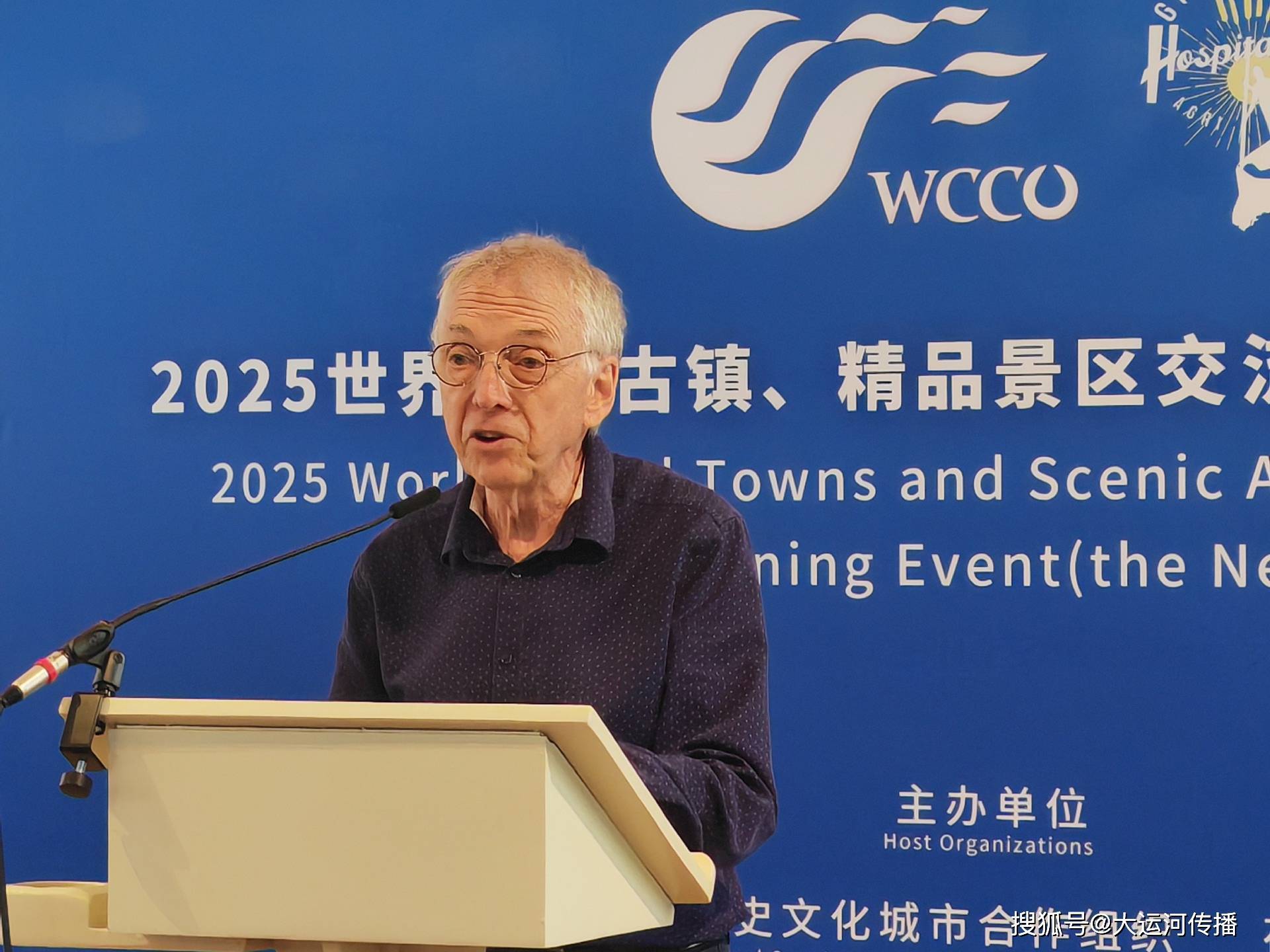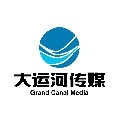大运河传媒讯 (晖军 发自荷兰)内河航道国际组织(IWI)前主席、世界运河历史文化城市合作组织(WCCO)专家顾问大卫·爱德华兹-梅参加6月30日—7月2日在荷兰羊角村举办的WCCO2025世界运河古镇、精品景区交流互鉴活动时表示,在中国扬州举办的2019世界运河大会上,首次试行“运河漫步”倡议,让民众亲水近水,感受文化遗产与独特的水环境氛围,如今这在世界已广泛推广。

他表示,在中国、越南和众多欧洲国家的水道网络中,最引人入胜之处恰恰在于其鲜明的尺度对比:既有服务于国家及区域经济、可通行千吨级驳船与顶推船队的大型航道,又有如同毛细血管般密布的支线水道——部分可承载数百吨货驳,而像羊角村这样的运河则仅限轻型船只通行,多采用电动或人力驱动的小舟。随着过度旅游对步行路线的压力,羊角村让游客划船进村,既能缓解主要步行路线的通行压力,又能促进可持续旅游发展。因而,他提出“私人船只运营”的视角,希望启发中国及世界同行突破“池塘泛舟”的休闲模式,探索更深入的水道文化参与方式。
附讲话内容
THE IMPORTANCE OF INTERNATIONAL COOPERATION - IMMERSION IN WATERWAY CULTURE
First of all I would like to congratulate our hosts Giethoorn and the WCCO for having engaged many years ago the mechanism of cooperation between canal sites – from cities to towns to local areas of scenic beauty and cultural interest.
Today's conference is a very meaningful occasion for me as former president of Inland Waterways International, and personally as a visitor and admirer of the canals and canal cities in both the Netherlands and China, as of course in all other parts of the world.
My first visit to the Netherlands was in a hire boat from Sneek in Friesland in 1971. That's 54 years ago. This was the route we took, which included Giethoorn on the way back from Amsterdam to Sneek.
I chose to stay on a boat also for today's event, for a purpose: to draw attention to the way of life on the water, in a world apart. In this case Alida is a historic boat belonging to Jim Miller, a member of DBA The Barge Association, which campaigns for favourable conditions for long-distance navigation through the waterways of the UK and continental Europe. This boat in Giethoorn, which you will have the opportunity to visit later today, represents a category of tourist that is critically important in the densely-populated Netherlands, because it generates movements on the waterways, hence with no impact on road traffic (except where traffic has to be stopped to raise bridges).
Cultural appropriation of the waterways of the nation and the eastern provinces is a key objective on China's Grand Canal, many sections of which are inscribed in the UNESCO World Heritage List. The intention of Central and Provincial Governments is to bring the population to the waterside, for people to literally soak up the heritage, the atmosphere, and to treasure the unique water environment. Such is the case of the Canal Walk initiative, which was first tried during the World Canals Conference in Yangzhou in September 2019, and has expanded vastly since then.
Visiting canal sites and cities on the water adds a valuable dimension, which is immersion in this unique environment, and hence participation in navigation, the prime function of waterways of all dimensions. Dimensions are a critical factor in managing navigation. A fascinating aspect of the waterways in our countries (China, Vietnam and many European countries) is precisely the marked contrast in dimensions between the waterways serving the national and regional economy, with high-capacity barges and push-tows (thousands of tonnes per unit) and the countless smaller waterways which serve as capillaries in the body of the network, some big enough to carry freight in barges of a few hundred tonnes, others, like the canals in Giethoorn, open only to light craft, often limited to electric or human-powered craft only.
A classic example of immersion in waterway culture that means taking three separate boats depending on the waterway dimensions is the visit to the Little Three Gorges. Tourists transfer first from the big Yangtse River cruise ship to a medium-sized passenger boat to enter the small winding tributary of the Yangtse, then into small pirogue-type boats to row up the stream and see how loads were towed from the bank in history.
Here in Giethoorn, a specific service to boatowners mooring in the marinas (along the main canal to the left of the map below) could be small boat rental for rowing into the village. This serves sustainable tourism in the village by reducing the pressure on the main walking route, crossing many canals, as shown on this map: the Molenweg.
The pressure on major tourist sites brought by mass tourism on walking routes is well-known and well documented, critical examples being Venice, with the recently enforced entry fee for day visitors, and Simione on Lake Garda in Italy, where pedestrian traffic across the narrow bridge was brought to a standstill. This is why every effort should be made, in our opinion, to get people to take to the water in electric or human-powered boats, to approach these sites from the water. This is an area where it could be extremely useful to compare experience and fine-tune the actual arrangements encouraging 'slow waterborne tourism' around such sites.
By coincidence, I have just attended a boat rally organised by DBA The Barge Association on a UNESCO World Heritage canal site, the Canal du Centre in Belgium. The case of this canal and its management as a tourist attraction is relevant to our assembly today in Giethoorn. One would have thought that the UNESCO label and the uniqueness of the historic boat lifts, combined with the grandeur of the modern lift, would bring automatic success. Sadly, this is not the case. The engineer in charge of the Canal du Centre reported on visits, in two separate categories:
- private boats navigating through the canal
- land visitors taking the tours and boat excursions organised by the operator of the site.
Regular tourists are welcomed by a public association created by Hainaut Province (the size of a county in China!) called Voies d'eau du Hainaut. In 1999 they took over all the assets of a private association that had run the attraction in multiple dimensions from the early 1980s. That association, the Compagnie du Canal du Centre, was attracting close to 100 000 visitors per year when it was wound up. Voies d'eau du Hainaut has seen this figure drop to barely 25 000. As a result, it is now itself ceasing its activity, so that the Walloon Ministry of Public Works, who are completing a massive €38 million restoration of the historic lifts, now has to put out a call for tenders for a new operator!
For the boats, it is a similar, sad story of decline: 780 boats passed through the historic canal in 2000, before an accident at Lift No. 1 forced closure for many years; now it is barely 180 boats per year. There is not time today to develop all the reasons for this, but I wanted to present this cautionary tale about an emblematic canal site simply NOT WORKING as it should!
The angle of private boat usage developed during my presentation is also put forward to encourage our Chinese partners to think 'outside the box' and imagine how citizens could gradually be encouraged to 'take to the water' in a more meaningful way than just 'boating on a pond' for a quick recreational fix. The quick fix is indeed one of the recent suggestions by Voies d'eau du Hainaut for visits to the historic lift No. 1, as shown here
The beauty of the Barge Association model - also supported by Inland Waterways International - is that it brings to the canal and these emblematic structures vessels that are similar to those for which the canal was built and completed in 1917. There cannot be sustainability in the idea of allowing small electric boats to go up and down this lift, as if it were a theme park attraction.
Naturally, I am open to discussion on all aspects of this specific 'boating angle' of canal tourist site management!
I would also like to report, in concluding, that Inland Waterways International has just been granted international NGO status by the UN's Economic and Social Council. This was notified to us on June 20!
国际协作的重要性——沉浸式水道文化体验
首先,我要感谢主办方羊角村(Giethoorn)和世界运河历史文化城市合作组织(WCCO)多年来推动运河城镇及景区合作机制所做的努力。
作为国际内河航道组织(IWI)前主席,同时作为一名运河爱好者,我曾到访过荷兰、中国以及世界各地的许多运河城市,今天的会议对我而言意义重大。
1971年,我首次到访荷兰,从弗里斯兰省的斯内克(Sneek)租船出发,途经羊角村返回,这条航线令我印象深刻。54年后的今天,我特意选择住在船上参加活动,旨在唤起人们对水上生活方式的关注。这艘名为Alida的船属于英国驳船协会成员Jim Miller,该协会致力于推动欧洲内河长途航行的便利化。在荷兰这样的人口稠密国家,此类水上旅游能有效分流陆路交通压力(除非需要升起桥梁让行)。
中国大运河的多个河段已被列入联合国教科文组织世界遗产名录,其核心目标之一是通过“运河漫步”等倡议,让民众亲水近水,感受文化遗产与独特的水环境氛围。2019年扬州世界运河大会首次试行这一项目,如今已广泛推广。
探访滨水运河遗址与城市,能带来一种独特的沉浸式体验——亲身参与航运活动,这正是各类水道最本质的功能。水道尺度的差异是航运管理的关键要素。在中国、越南和众多欧洲国家的水道网络中,最引人入胜之处恰恰在于其鲜明的尺度对比:既有服务于国家及区域经济、可通行千吨级驳船与顶推船队的大型航道,又有如同毛细血管般密布的支线水道——部分可承载数百吨货驳,而像羊角村这样的运河则仅限轻型船只通行,多采用电动或人力驱动的小舟。
以小三峡为例,游客需依次换乘三种船只:先由长江游轮转乘中型客船进入支流,再换乘传统木舟溯溪而上,亲身体验历史上纤夫拉船的运输方式,堪称水道文化沉浸式体验的典范。
在羊角村,我们可为停泊在主运河码头的船主提供小舟租赁服务,让游客划船进村。这既能缓解主要步行路线Molenweg的通行压力(该路线需多次跨越多条运河),又能促进可持续旅游发展。
过度旅游对步行路线的压力已有充分案例佐证:威尼斯近期开始征收游客进城费,意大利加尔达湖的锡尔苗内窄桥也因人流拥堵瘫痪。因此,我们应当全力推动游客改乘电动或人力船只从水路游览。在这方面,各国“慢行水上旅游”的经验交流与方案优化尤为重要。
巧合的是,我最近刚参加了驳船协会(DBA)在比利时中央运河(联合国世界遗产)组织的船队集会。该运河的旅游管理现状对本次羊角村会议具有参考价值——尽管拥有世界遗产头衔、历史船闸与现代升船机等独特资源,其运营却陷入困境。负责工程师提供的数据显示:
私人通航船只:2000年780艘,现降至180艘/年
陆地游客量:从1999年前的年均10万骤降至2.5万
比利时埃诺省成立的运营机构Voiesd'eau du Hainaut即将停止运作,瓦隆尼亚公共工程部在耗资3800万欧元修复历史船闸后,不得不重新招标运营商。
我提出私人船只运营的视角,是希望启发中国同行突破“池塘泛舟”的休闲模式,探索更深入的水道文化参与方式。驳船协会模式(国际内河航道组织也支持)的精髓在于:让符合1917年运河初建时航运特质的船舶继续航行,而非将历史船闸降级为电动游船的“主题公园设施”。
最后分享喜讯:国际内河航道组织已于6月20日正式获得联合国经社理事会认可的国际非政府组织地位!
制作 曹宇
编校 延晨 徐蓉
一审 桂艳 张莉
二审 肖东
三审 晖军
